The famous statue “Grief” memorializes Clover Adams, a talented photographer whose husband wouldn’t let her work be published.
She committed suicide in 1885 by drinking the chemicals she used to develop photographs.
Her husband, historian Henry Adams, commissioned Augustus Saint-Gaudens to create the draped figure to portray nirvana, a state of existence beyond joy and sorrow.
It was meant to ask a question, not to give an answer, wrote Adams.
So why did Clover Adams commit suicide? Do her photographs suggest the reason why?
Clover Adams, Photographer
New techniques gave women a chance to explore photography after the Civil War, and Clover Adams went all in. Her photographs convey isolation and limitation. Many of her settings evoke the claustrophobia she may have felt as a woman in Gilded Age America. Others express isolation and the distance between people.
She lost her mother at an early age, and married a man descended from the famously remote John Quincy Adams. Though they longed for children, they never had any.
“Creativity also undoes, overwhelms, gives power to hidden undertows. What’s brought forward in expression is exposed and becomes irrefutable,” wrote her biographer, Natalie Dykstra.
Clover Adams, Brahmin
Clover Adams was born Marian Hooper on Sept. 13, 1843 into a Boston Brahmin family. Her mother, Ellen Sturgis Hooper, won acclaim for her Transcendentalist poetry. Her father, Robert William Hooper, achieved prominence as a Boston physician. The wealthy Hooper family lived at 114 Beacon St. in Boston’s fashionable Back Bay.
The Hoopers had a history of mental illness.
“I am a ‘Hooper, and if a feeling is very pleasant I feel as if it were wrong,’ Clover Adams wrote to her sister.
Grief marred her pampered childhood. her mother died when she was five, and her Aunt Susan, a surrogate mother, killed herself when she was nine. She grow close to her father—too close for her future husband’s liking.
Marriage
In 1872 at her father’s summer home at Beverly Farms in Massachusetts, she married Henry Adams, grandson of John Quincy Adams and son of diplomat and historian Charles Francis Adams. Henry Adams described himself as ‘absurdly in love’ with her, but his brother Charles warned him about the family’s mental instability. “Heavens!–no!–they’re all crazy as coots,” he said when his brother told him he intended to marry Clover.
Henry, a workaholic writer and historian, told her how he’d ‘improve’ her once they married. He discouraged her artistic pursuits. In one of his novels, he wrote that a woman ‘cannot both enjoy love and be truly herself in her creative ambition or beliefs.’
When Clover Adams got interested in photography on a trip to New York, he told her that wouldn’t happen again. And when a prestigious magazine wanted to use one of her photographs on the cover, he said no.
Washington, D.C.
Five years into their marriage in 1877, Henry and Clover Adams moved to Washington, D.C. She belonged to the literary circle called the Five of Hearts, along with her husband, John Hay, Hay’s wife Clara and Clarence King, the famous geologist who led a double life pretending to be a West Indian railroad porter with a secret family in New York City.
Her world was a clubby little one: her friend John Hay had an affair with her brother-in-law Brooks Adams’ sister-in-law, Nannie Cabot Lodge.
Her friends viewed her as witty, clever, athletic. Perhaps they sensed her troubled nature. She inspired Henry James to write Daisy Miller in 1878 and Portrait of a Lady in 1881. When she died, James wrote, ‘poor Mrs. Adams found, the other day, the solution of the knottiness of existence.’
Grief
She remained close to her father, to her husband’s dismay. When he died in April 1885, she lapsed into a depression.
In 1885, the Adamses were building a baronial mansion on Lafayette Square in Washington, D.C., and living in temporary housing on H Street.
On Dec. 6, 1885, Clover Adams drank half a vial of potassium cyanide in the bedroom of their rented home. Henry then found her lying on the floor in front of the fire in the fireplace.
He never mentioned her, not once, in his autobiography, The Education of Henry Adams, and he destroyed all her letters and photographs of her. A year after he died her wrote a friend that he hadn’t had the good luck to attend his own funeral. But, he wrote, “I have buried pretty nearly everything I lived for.”
With thanks to Clover Adams: A Gilded and Heartbreaking Life by Natalie Dykstra. Featured image of the Adams Memorial By Wikipedia Loves Art participant “red_herring” – Uploaded from the Wikipedia Loves Art photo pool on Flickr, CC BY-SA 2.5, https://commons.wikimedia.org/w/index.php?curid=7821686. This story was updated in 2023.



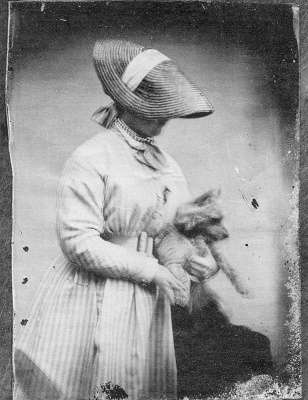
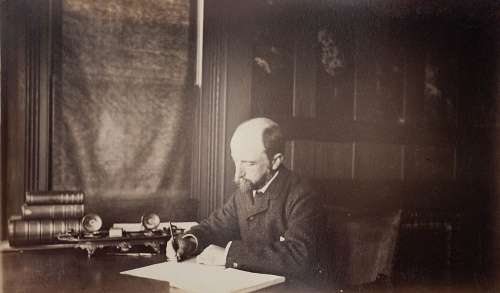
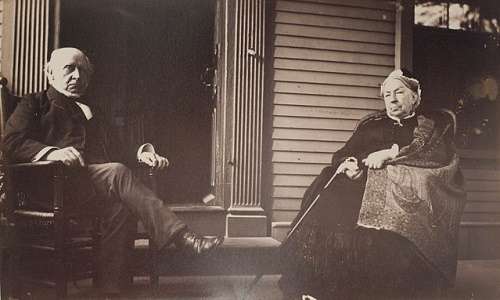
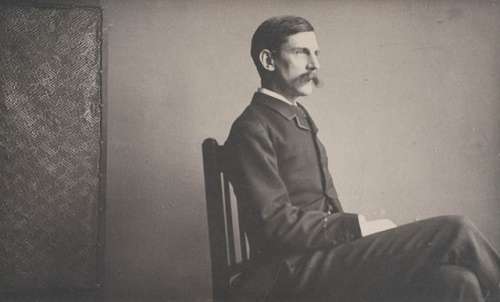
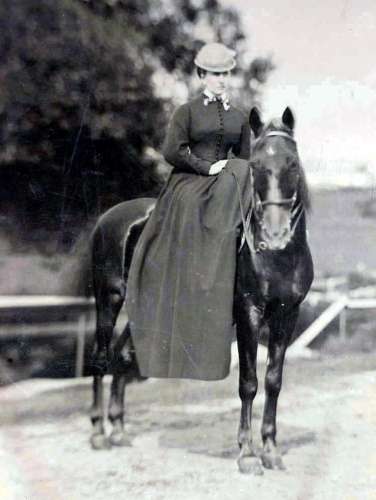

2 comments
[…] living in Washington, D.C., Henry Adams and his wife Marion Hooper “Clover” Adam,s formed an intense friendship with Clarence King and Clara and John Hay. King, a geologist, had […]
[…] suicide note found. So, why did she do it? Some say it was the loss of her father months back. Some think it was the claustrophobia caused by […]
Comments are closed.